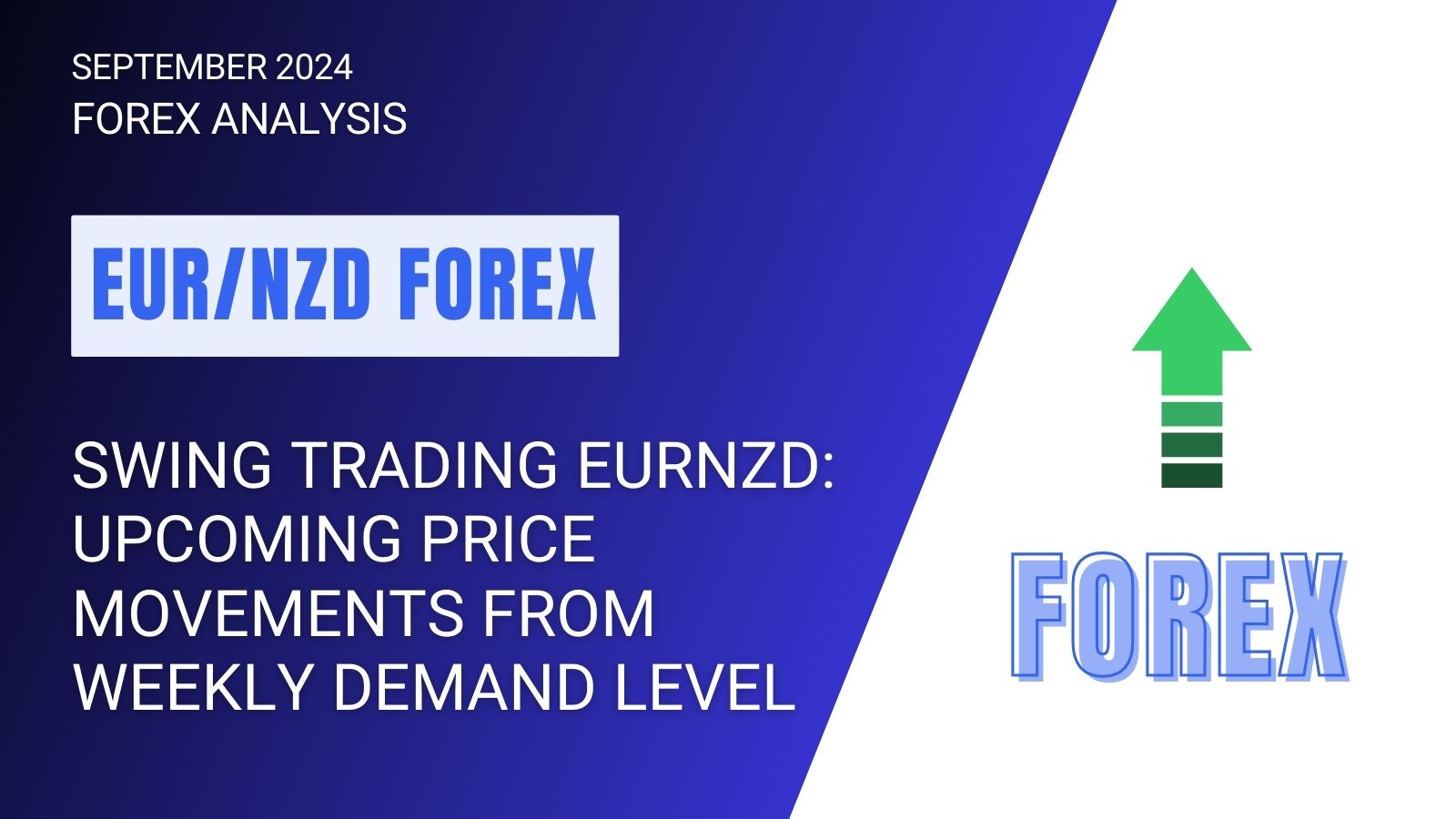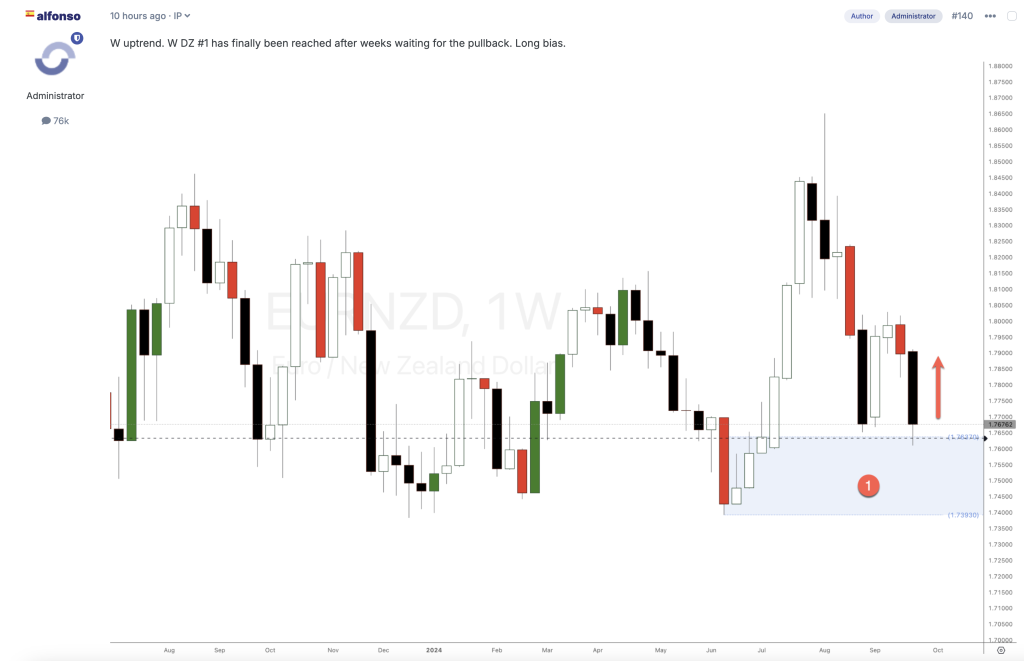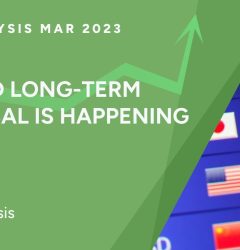25 Sep

Understanding market movements is paramount in the dynamic world of forex trading, where every pip can mean profit or loss. Enter EURNZD—a currency pair that has recently caught the attention of traders looking for robust opportunities. With its unique blend of economic influences from Europe and New Zealand, this pair offers a rich tapestry of price action just waiting to be explored. This supply and demand Forex analysis will delve into swing trading strategies tailored explicitly for EURNZD, highlighting critical insights from weekly demand levels that could shape your following trades. Whether you’re a seasoned trader or just starting out, join us as we navigate through pivotal price movements and uncover actionable strategies to enhance your trading game!
Understanding Demand Zones in Swing Trading
Demand zones are critical areas on a Forex price chart where buying interest significantly outweighs selling pressure. When prices drop to these levels, traders anticipate that buyers will step in, increasing prices. In swing trading, recognizing these demand zones can provide strategic entry points. A strong demand zone often signals potential reversals or bounces back into an uptrend. Understanding the psychology behind this behaviour is essential; many traders place buy orders near these levels.
To identify demand zones effectively, look for previous price action where substantial upward movement occurred after a decline. These historical markers help inform future trades and enhance decision-making processes. Moreover, the strength of a demand zone can vary based on several factors—timeframes used and market conditions play significant roles. As you delve deeper into your analysis, always remember patience is vital when waiting for price confirmation within these crucial areas.
Introduction to Swing Trading and EURNZD
Swing trading offers the thrill of capturing short-term price movements while allowing traders to maintain a more hands-off approach than day trading. EURNZD stands out for its unique volatility and potential opportunities among the many currency pairs available. Understanding key supply and demand price levels becomes crucial as market dynamics shift.
The EURNZD pair, representing the euro against the New Zealand dollar, has been drawing attention lately since it has dropped for weeks, attracted by the magnetism of the strong weekly demand level at 1.76. With economic indicators fluctuating and geopolitical events unfolding, savvy swing traders are keen on identifying areas where demand may drive prices up. This weekly timeframe analysis for the EURNZD forex cross-pair below clearly shows a strong demand zone that has gained control recently. This imbalance will impact future price movements. Whether you’re an experienced trader or just starting your journey in swing trading, there’s something here for everyone looking to harness the power of these pivotal market moments.
YoYou can utilize a larger timeframe imbalance to search for setups on smaller timeframes. Additionally, you can employ intraday forex strategies and supply and demand forex strategies to take advantage of the strong weekly demand level.

Understanding Demand Zones in Swing Trading
Demand zones are critical areas on a Forex price chart where buying interest significantly outweighs selling pressure. When prices drop to these levels, traders anticipate that buyers will step in, increasing prices. In swing trading, recognizing these demand zones can provide strategic entry points. A strong demand zone often signals potential reversals or bounces back into an uptrend. Understanding the psychology behind this behaviour is essential; many traders place buy orders near these levels.
To identify demand zones effectively, look for previous price action where substantial upward movement occurred after a decline. These historical markers help inform future trades and enhance decision-making processes.
Moreover, the strength of a demand zone can vary based on several factors—timeframes used and market conditions play significant roles. As you delve deeper into your analysis, always remember patience is vital when waiting for price confirmation within these crucial areas.
How do you enter a swing trade on EURNZD?
To successfully enter a swing trade on EURNZD, identify a clear demand zone on the weekly chart like the one shown above shared at Set and Forget Online Trading Academy. This is where the price tends to bounce back, indicating strong buying interest.
If you don’t know how to trade supply and demand imbalances and have not purchased the Supply and Demand Trading Course. Once you spot this area, wait for confirmation signals of use intraday Forex trading strategies. Look for bullish candlestick patterns or an increased volume as the price approaches the demand zone. These indicators suggest that buyers are stepping in.
Next, set your entry point slightly above the demand zone to avoid getting caught in false breaks. A stop-loss order should be positioned just below the identified level for protection against unexpected moves. Consider using a risk-to-reward ratio of at least 1:2 when planning your exit strategy. This means aiming to make double what you’re risking with each trade.
Stay disciplined and monitor market conditions closely; you do not need to adjust your strategy, considering broader economic news impacting EURNZD’s performance.









